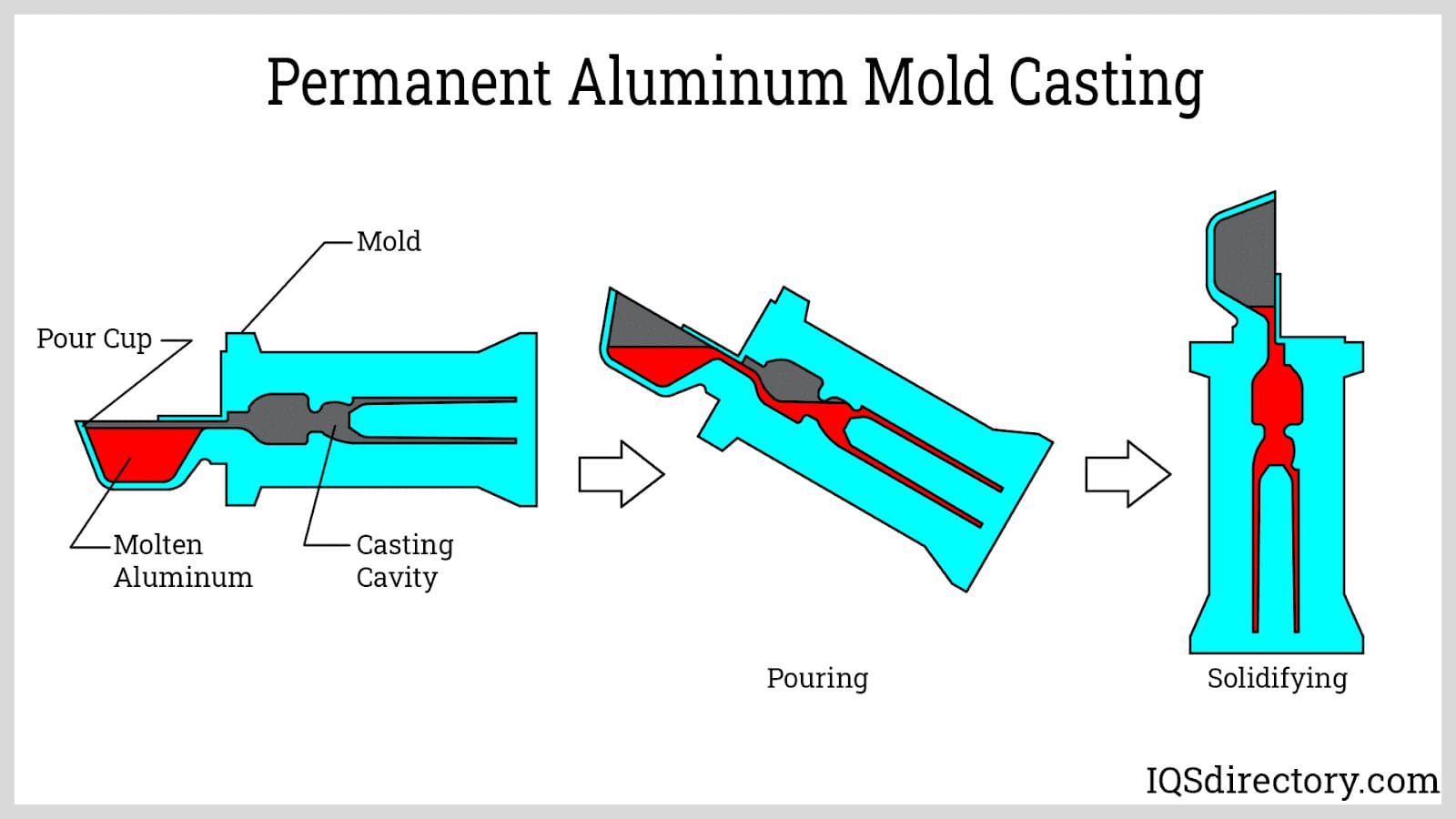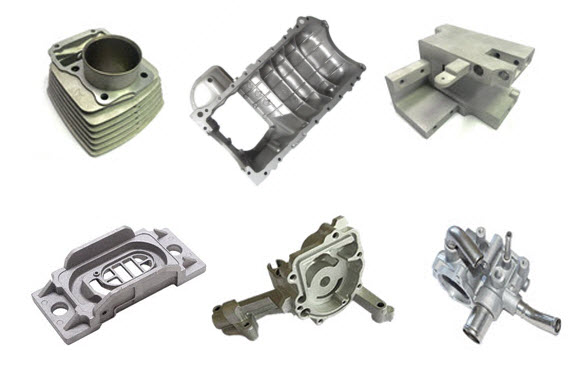The Several Uses Aluminum Castings: A Comprehensive Guide for Market Professionals
Light weight aluminum spreadings play an essential duty throughout different industries, thanks to their special residential or commercial properties. These long lasting and light-weight elements are essential in auto and aerospace applications. Comprehending their advantages and the production processes involved can substantially impact efficiency and efficiency. As technology advancements, brand-new technologies continue to emerge. Industry experts must take into consideration these elements to make educated selections. The implications of these developments are worth checking out better.
Advantages of Aluminum Castings in Different Industries
Light weight aluminum spreadings supply numerous advantages across different markets, making them a favored option for lots of applications. Among the key advantages is their lightweight nature, which adds to general power performance in transportation and equipment. This decreased weight likewise boosts ease of handling and installation, leading to lower labor expenses.
Light weight aluminum spreadings display excellent deterioration resistance, expanding the life expectancy of elements in extreme atmospheres. Their thermal and electric conductivity enables reliable warm dissipation and efficient electric applications.
In addition, light weight aluminum can be quickly alloyed and adjusted, enabling the development of complex shapes and layouts that meet specific design demands. This adaptability supports technology in markets such as auto, aerospace, and customer items.
The recyclability of light weight aluminum straightens with sustainable methods, making it an ecologically friendly option for modern manufacturing. Generally, the advantages of aluminum castings place them as important products in various industries.
Key Manufacturing Processes for Light Weight Aluminum Castings
A variety of manufacturing processes are used to develop aluminum castings, each tailored to satisfy specific application demands and production quantities. Among the most usual approaches are sand casting, die casting, and investment spreading.

Financial investment spreading, also called lost-wax spreading, supplies remarkable surface finishes and detailed details, commonly made use of for smaller sized, accuracy elements. In addition, gravity casting utilizes the pressure of gravity to fill mold and mildews, appropriate for larger spreadings where accuracy is much less vital. Each process has its benefits, providing to diverse industrial demands while maximizing effectiveness and high quality in light weight aluminum spreading manufacturing.
Applications of Aluminum Castings in Automotive and Aerospace
In numerous applications within the aerospace and automotive industries, aluminum spreadings play an important role as a result of their light-weight homes and exceptional strength-to-weight proportion. In the automotive market, elements such as engine blocks, transmission instances, and wheel rims are frequently produced utilizing light weight aluminum spreadings. These parts profit from reduced weight, bring about enhanced gas efficiency and boosted efficiency.
In aerospace, you could try this out aluminum spreadings are essential for architectural components, consisting of airplane structures, touchdown gear, and engine housings. The material's resistance to rust and ability to stand up to heats make it suitable for these requiring applications. Furthermore, aluminum spreadings help with complicated geometries, allowing the style of detailed parts that add to general airplane effectiveness.
Technologies and Innovations in Aluminum Casting Technology
As sectors remain to evolve, advancements in aluminum casting innovation are driving substantial enhancements in performance and performance. Advanced strategies such as 3D printing and spreading simulation software application have actually changed conventional practices, enabling for more specific styles and lowered waste. These innovations enable producers to create complicated geometries that were previously unattainable, enhancing the convenience of aluminum castings.
Additionally, the advancement of brand-new alloy structures and treatment techniques has boosted mechanical homes, making spreadings lighter yet stronger. Automated procedures are additionally being integrated, minimizing human error and raising manufacturing rate.

Best Practices for Choosing and Making Use Of Light weight aluminum Castings
When choosing and utilizing aluminum castings, cautious factor to consider of specific standards can significantly influence the end product's performance and long life. Market specialists need to analyze the specific application needs, consisting of load-bearing capacities, rust resistance, and thermal conductivity. Choosing the proper alloy is vital, as different alloys provide differing strengths and qualities.
Furthermore, understanding the casting process-- whether sand casting, die casting, or investment spreading-- will certainly influence the last product's quality and cost-effectiveness. Quality control measures, such as non-destructive screening and dimensional assessments, are vital to ensure that the spreadings satisfy sector standards.
Appropriate handling and storage of aluminum spreadings can stop damages, assuring peak performance. Working together with trustworthy providers who focus on high quality control can improve the reliability of the completed parts. By sticking to these finest techniques, market professionals can make the most of the benefits of light weight aluminum castings in their applications.
Regularly Asked Inquiries
What Are the Ecological Influences of Aluminum Spreading Production?
Light weight aluminum spreading manufacturing can bring about significant ecological effects, consisting of greenhouse gas emissions, power intake, and resource deficiency. Furthermore, inappropriate waste management might result in dirt and water contamination, influencing neighborhood ecosystems and communities.
How Do Aluminum Castings Contrast to Other Steel Spreadings?
Light weight aluminum castings are lighter and corrosion-resistant compared to various other metal castings like iron or steel. They supply premium thermal and electrical conductivity, making them suitable for applications where weight and toughness are important variables.
What Is the Expense Distinction Between Light Weight Aluminum and Various Other Products?
The cost of light weight aluminum castings generally ranges from modest to high, frequently extra cost effective than stainless-steel yet more expensive than some plastic alternatives. Metal Castings. Aspects such as production product, volume, and intricacy specifications substantially affect total pricing
Can Light Weight Aluminum Castings Be Recycled?
Aluminum castings can certainly be recycled. This procedure considerably decreases power intake and ecological influence compared to creating new light weight aluminum, making reusing an important method in advertising sustainability and source preservation within different sectors.
What Safety and security Measures Should Be Taken During Aluminum Spreading Processes?
Throughout light weight aluminum casting processes, important precaution consist of wearing safety equipment, making sure correct air flow, using heat-resistant tools, keeping devices, and complying with safety and security methods to avoid exposure to hazardous materials and minimize the threat of accidents. (Aluminum Foundry)
Sand casting includes creating a mold from sand, allowing for complicated forms and big spreadings. Investment casting, likewise recognized as lost-wax casting, gives phenomenal surface area finishes and complex information, usually made use of for smaller, accuracy parts. Furthermore, gravity casting makes use of the force of gravity to fill molds, ideal for larger castings where precision is less essential. In addition, comprehending the casting process-- whether sand casting, pass away casting, or investment spreading-- will certainly affect the final product's top quality and click for more info cost-effectiveness. Aluminum castings are lighter and corrosion-resistant compared to various other metal spreadings like iron or steel.